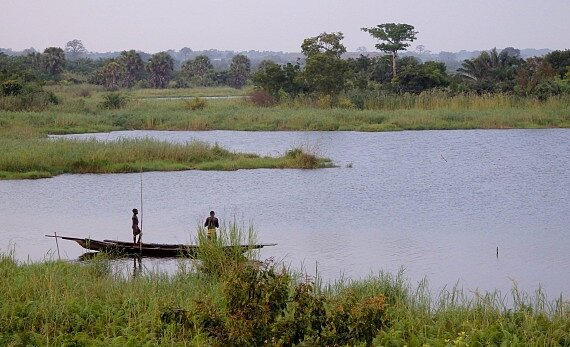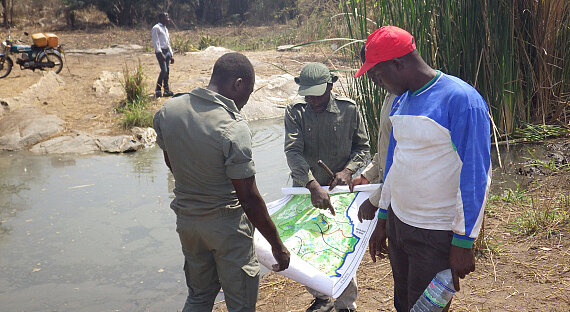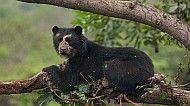23 new nature reserves under UNESCO protection
![[Translate to English:] Manu Biosphärenreservat, Peru. Foto: Daniel Rosengren/ZGF.](/legacy/Bilder/2017/170712_Biosph%C3%A4renreservate_Artikelbild_310.jpg)
The United Nations announces 23 new UNESCO Biosphere Reserves around the world and expands eleven existing ones. IKI projects were involved in the process in three countries.
The United Nations has decided to add 23 new sites to the UNESCO World Network of Biosphere Reserves (WNBR) and approved extensions to another 11. The UN list includes nature reserves on all the continents, with four of the areas even crossing national borders.
One of them is the newly recognised Transboundary Biosphere Reserve in the Mono Delta, which combines two other new reserves at the southern border running between Benin and Togo. The cross-border nature reserve covers around 3,500 km² and is home to endangered animal species such as the manatee and hippopotamus. It comprises many landscape forms and ecosystems. It also includes forest areas which some local populations regard as sacred. Most of the roughly 900,000 people who live in the area are small farmers or fisherfolk.

The project assumed key functions and acted as a catalyst and coordinator in the recognition process. Together with local communities and initiatives as well as the environmental ministries of the two countries, new protection areas were designated along the Mono River and then merged to form a biosphere reserve. With support from local initiatives, this was a bottom-up process driven by local residents – an important factor that UNESCO also highlighted for the project’s success. Now that the areas have been recognised, coordination structures need to be established to enable the local communities to manage the reserve effectively in cooperation with non-governmental organisations and the governments.

In Peru, an IKI project contributed to the expansion of the Manu Biosphere Reserve. The area, which was designated a biosphere reserve in 1977, has been expanded from 1.88 million hectares to 2.44 million hectares. Two of the planet’s most diverse biomes, the eastern Andes and the lowlands of the western Amazon Basin, meet in the reserve, which is located in the south-east of the country. The area is a biodiversity hotspot with over 5,000 native plant species and it is estimated to have more than 500,000 native animal species. The highlands are home to indigenous peoples and farming communities. In the scope of the IKI project Forest Conservation and Natural Resource Management in the Manu Biosphere Reserve being implemented by the Frankfurt Zoological Society (ZGF), numerous measures are being carried out that support the sustainable coexistence of human beings, animals and nature in the area. These measures include promotion of the involvement of local and indigenous population groups and reducing the human-wildlife conflict.

The WNBR network is part of the Man and the Biosphere programme (MAB). The MAB programme was initially launched by UNESCO in 1970 as an interdisciplinary science programme, but today it focuses on biosphere reserves. Unlike in traditional nature protection areas, priority is given to the interaction between humans and nature. The reserves aim to provide space for sustainable development where biodiversity is preserved and social and economic issues are taken into account. For example, a key element is the participation of the local population in planning and managing the protected areas.
This is also the approach taken in the design of the biosphere reserves. There is usually what is termed a core zone in the centre where no human activity is permitted. Around this core are buffer zones where the sustainable use of natural resources is allowed. Local residents are therefore not displaced from their home regions. These two-tier areas are then connected by transition zones in a biosphere reserve. Hence, biosphere reserves are a modern approach to the sustainable management of natural resources.
The link has been copied to the clipboard
Contact
IKI Office
Zukunft – Umwelt – Gesellschaft (ZUG) gGmbH
Stresemannstraße 69-71
10963 Berlin
Related Videos
Related Publications
-
 05/ 2022 | IKI Evaluation
05/ 2022 | IKI EvaluationTransboundary Biosphere Reserve Mono Delta
[Translate to English:] Deutsch (PDF, 1 MB)










![[Translate to English:]](/legacy/_processed_/5/5/csm_Indien_EE_Solar_Frau_bfcf99c425.jpg)

